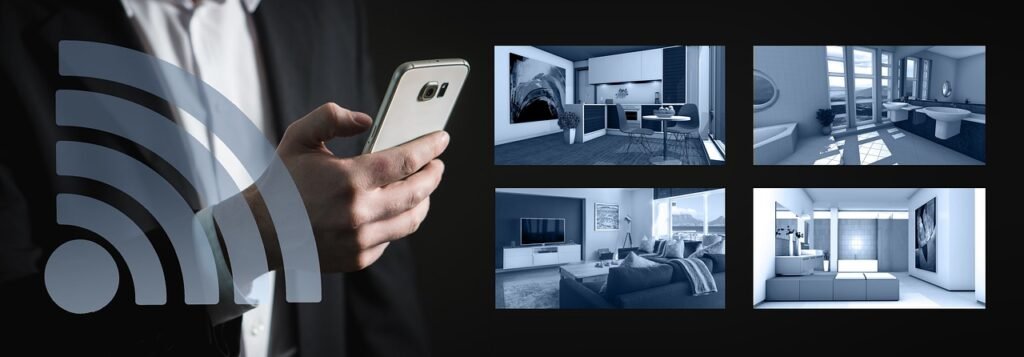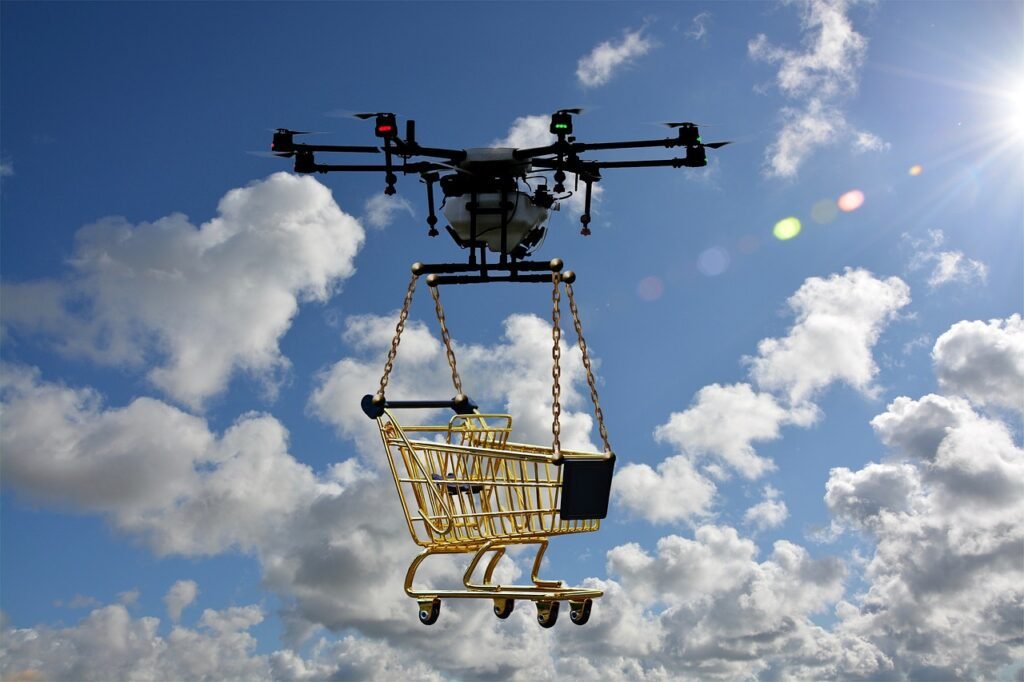The year 2024 is shaping up to be a banner year for innovation. From the continued evolution of familiar devices to the dawn of entirely new paradigms, the tech landscape is brimming with possibilities. This blog delves into ten of the most exciting gadgets poised to transform the way we live, work, and interact with the world around us.
1. Augmented Reality Glasses: Redefining Reality

Augmented reality (AR) glasses are no longer the stuff of science fiction. These innovative devices overlay digital information onto the real world, seamlessly blending the physical and virtual realms. Imagine receiving turn-by-turn directions projected onto your field of view, translating languages in real-time during conversations, or seeing reviews and ratings of restaurants superimposed on the storefront.
Analysis: AR glasses hold immense potential across various sectors. For example, in education, students can interact with 3D models of historical landmarks or dissect virtual frogs in biology class. In the professional sphere, architects can visualize design plans within a construction site, while engineers can overlay schematics on malfunctioning equipment for easier troubleshooting.
Challenges: Battery life, display quality, and user interface design are key hurdles for AR glasses. Additionally, privacy concerns regarding data collection and potential misuse of the technology need to be addressed.
2. Foldable Smartphones: Unfolding a New Era of Mobility

The smartphone has become an indispensable tool, but its size can sometimes be a hindrance. Foldable smartphones aim to bridge the gap between phone and tablet, offering a larger screen for productivity and entertainment while maintaining portability. Imagine unfolding your phone to reveal a tablet-sized display perfect for watching movies, browsing the web, or playing games.
Analysis: Foldable phones offer increased screen real estate without sacrificing pocket space. This makes them ideal for multitasking, enjoying media on a larger screen, and enhancing gaming experiences. Additionally, the ability to fold the screen inwards protects it from scratches and damage.
Challenges: The folding mechanism presents engineering challenges, potentially leading to durability concerns and higher price points. Additionally, optimizing app experiences for the unique screen format requires developer adaptation.
3. Advanced Smartwatches: Beyond Timekeeping

Smartwatches have transitioned from mere fitness trackers to versatile companions on your wrist. In 2024, expect even more advanced functionalities. Imagine smartwatches with built-in GPS for navigation, advanced health monitoring capabilities that track blood pressure and blood sugar levels, and the ability to seamlessly make and receive calls.
Analysis: Advanced smartwatches offer a convenient way to stay connected and monitor your health without constantly reaching for your phone. Features like contactless payments and built-in GPS can streamline daily tasks. Additionally, advanced health tracking can provide valuable insights into your overall well-being.
Challenges: Battery life remains a concern for advanced smartwatches, especially with increased functionality. Additionally, the smaller screen size may limit usability for certain tasks.
4. Smart Home Devices: Weaving a Web of Convenience

The smart home revolution continues its relentless march, with a wider range of devices poised to become part of our interconnected ecosystems. Imagine controlling thermostats, lighting, and appliances remotely from your smartphone. Smart security systems can provide real-time security monitoring and even integrate with other devices to trigger automated responses, like turning on lights when motion is detected.
Analysis: Smart home devices offer convenience, security, and increased energy efficiency. The ability to automate tasks like adjusting temperature or turning on lights creates a more personalized living experience. Additionally, smart security systems can provide peace of mind and deter potential intruders.
Challenges: Security concerns regarding data breaches and potential vulnerabilities in interconnected devices need to be addressed. Additionally, ensuring compatibility between various smart home devices from different manufacturers can be a challenge.
5. Quantum Computing Devices: Unlocking the Future of Computing

Quantum computing represents a paradigm shift in computing power. Unlike traditional computers that rely on bits (0s and 1s), quantum computers utilize qubits, which can exist in multiple states simultaneously (superposition). This allows them to perform complex calculations exponentially faster than classical computers, opening doors in fields like medicine, materials science, and artificial intelligence (AI).
Analysis: Quantum computing has the potential to revolutionize drug discovery by simulating complex molecular interactions. It can also accelerate the development of new materials with superior properties and unlock advancements in AI by enabling more sophisticated algorithms.
Challenges: Quantum computing is still in its nascent stages. Building and maintaining stable quantum computers remains a significant challenge. Additionally, the expertise required to program and utilize these machines is limited.
6. AI-Powered Personal Assistants: From Siri to Superpower

Virtual assistants like Siri and Alexa are becoming increasingly sophisticated, transforming from simple voice commands to proactive companions. Imagine AI assistants that can manage your schedule, anticipate your needs, and even order takeout based on your preferences.
Analysis: AI assistants can streamline daily tasks, improve productivity, and even provide companionship. They can learn your preferences and habits, offering proactive suggestions and reminders. Additionally, the ability to control smart home devices with voice commands further enhances convenience.
Challenges: Ethical considerations regarding data privacy and potential biases within AI algorithms need to be addressed. Additionally, ensuring natural and intuitive voice interaction requires ongoing development.
7. 3D Printers for Home Use: Printing the Future

3D printers are no longer confined to industrial settings. As they become more affordable and user-friendly, the potential for home-based 3D printing expands. Imagine creating custom objects, from toys and phone cases to tools and replacement parts, right in your living room.
Analysis: 3D printing empowers individuals to become creators. It fosters innovation and allows for the production of personalized objects or even hard-to-find parts. Additionally, the educational value of 3D printing for students can be immense, allowing them to visualize and create physical models from their designs.
Challenges: The range of materials compatible with home 3D printers is still limited. Additionally, safety concerns regarding fumes and potential hazards from improper handling need to be addressed.
8. Smart Fabrics and Wearables: Technology Woven into Everyday Life

Imagine clothes that can track your health metrics, monitor your posture, or even generate heat to keep you warm. Smart fabrics and wearables are poised to transform the way we interact with technology and manage our well-being.
Analysis: Smart fabrics offer a seamless way to integrate technology into our daily lives. They can provide valuable health data, improve athletic performance, and even offer therapeutic benefits. Additionally, the potential for self-regulating clothing that adjusts to temperature or environmental conditions is exciting.
Challenges: Ensuring comfort and breathability of smart fabrics is crucial. Additionally, the durability of integrated electronics and the potential for data security breaches need to be addressed.
9. Drone Technology Advancements: Taking Flight to New Horizons

Drones are no longer just toys. Advancements in technology are making them more sophisticated, affordable, and capable. Imagine using drones for deliveries, capturing stunning aerial photography, or even assisting in disaster relief efforts.
Analysis: Drones offer a wide range of applications beyond recreation. They can revolutionize delivery services, especially in remote areas, and enable safer inspection of hazardous environments. Additionally, their use in search and rescue operations and disaster zone assessments can be invaluable.
Challenges: Regulations regarding drone operation in controlled airspace need to be addressed. Additionally, concerns regarding privacy and potential misuse of drone technology need to be considered.
10. Brain-Computer Interfaces (BCIs): Bridging the Mind-Machine Gap

Brain-computer interfaces (BCIs) represent the cutting edge of human-computer interaction. These devices translate brain signals into commands, allowing for direct control of computers or other external devices. Imagine controlling prosthetics with your thoughts or even operating machinery without physical manipulation.
Analysis: BCIs hold immense potential for individuals with disabilities, restoring mobility and communication. Additionally, they can revolutionize gaming experiences and potentially even enhance learning and memory through brain stimulation.
Challenges: BCI technology is still in its early stages of development. Ethical considerations regarding brain data privacy and potential misuse of the technology are paramount. Additionally, ensuring user safety and minimizing the invasiveness of BCIs remains a challenge.
Conclusion
The ten tech gadgets explored here represent a glimpse into the exciting future that awaits us in 2024. From the convenience of smart homes to the transformative power of quantum computing, these innovations have the potential to reshape our world and redefine the way we live, work, and interact with technology. As we move forward, it’s crucial to consider not only the benefits but also the potential challenges and ethical considerations associated with these advancements. By fostering responsible innovation and ensuring inclusivity, we can harness the power of technology to create a brighter future for all.



